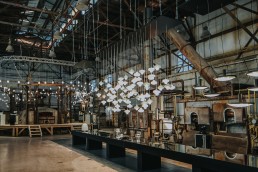
Inside Glassmakers by Brokis 2024
The Glassmakers Night by Brokis returned for its annual event held at Janštejn Glassworks in the Czech Republic town, Panské Dubenky.
The fifth edition of the event served retrospective to Milan Design Week 2024, providing an in-depth and intimate presentation of the products and extended collection that debuted in Milan this year.
The exclusive invite-only event welcomed visitors from around the world to attend a unique opportunity to witness how Brokis Glass and Brokis Lighting are created in the glass factory. Hand-blown glass features were made in person in front of guests during the day, followed by an evening drinks event topped with the unveiling of a top-secret installation.
darc’s Editor Sarah Cullen and Junior Journalist Ellie Walton had the pleasure to be invited to Telč along with other international, design-focused journalists to experience the event. Below, Walton recaps her time in the Czech town, experience of the full Brokis works, and interview with Jan Rabell, Founder of Brokis.
Glassmaking in the Czech Republic has a rich and extensive history. Traditionally, most of the glassworks were concentrated in the northern regions of the country, though others were spread throughout different areas. Over time, the quality of the molten glass and the resulting products achieved an exceptional standard, leading to global recognition of Czech glass. Janštejn Glassworks, known for hand-blown glass components used in Brokis lights, has a legacy spanning more than 200 years earning it the inclusion of handmade glass production on the UNESCO List of Intangible Cultural Heritage.
When Jan Rabell, entrepreneur, and Founder of Brokis, first bought Janštejn Glassworks in 1997, the industry was in decline with many glassmakers retiring and the rise of technology that could do the work at a quicker and much cheaper rate. Initially the investment was a speculative transaction with the hope of turning a profit once the price went up. However, after spending time learning about the craftmanship, Rabell saw a new vision, to restore the status of Bohemian hand-blown glass. Rabell says: “One of the first things I had to do was convince my wife of the potential of the glassworks and that we should move from Prague to be closer to Janštejn. In time, however, I fell in love with the art of glassmaking and began to see far greater potential and beauty in it. There was a need to support and cultivate a new tradition that would last for future generations, including my own children, which is why I’ve made them an active part of our journey. We are, after all, a family-run business.”
Rabell began the Glassmakers event five years ago during the Covid-19 pandemic when industry tradeshows and events were being closed, leaving the brand to find a new way to present its products to global markets. Rabell saw the opportunity to highlight what is at the heart of Brokislighting, its hometown and Janštejn Glassworks. Rabell says: “It was important for us to show where Brokis comes from and how unique the location is.”
The event commenced in the charming town of Telč, where we were treated to a delightful breakfast at a café and wine bar, which is owned by Brokis’ Deputy Director and Jan Rabell’s son, André Rabell. Afterward, we journeyed to the Brokis factory, where we were warmly welcomed by Mr. Rabell and a cup of rich espresso. The summer’s day was perfect for exploring the historic glassworks, which has lived in the corner of the Vysočina region since 1809. Walking around the premises, we could still see traces of its storied past, from towering chimneys to the original factory building, which are all centred around a large well of water that functions both for aesthetics but also for safety in case of fire.
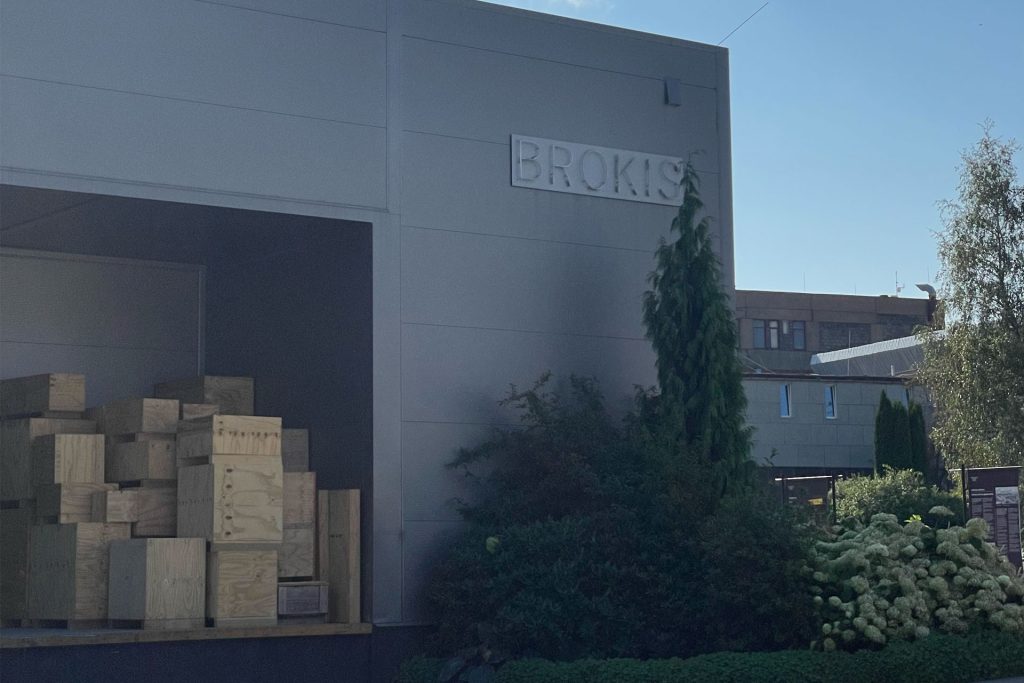
As we entered the expansive newer factory building, the sun’s warmth was soon replaced by the unforgiving heat emanating from the ovens and furnaces. The men and women working there were clearly masters of this craft, each one possessing a blend of confidence and patience to handle molten glass in a way that is so casual and effortless. Watching them manoeuvre metal poles topped with glowing liquid glass was both awe-inspiring and, in all honesty, a bit nerve-wracking too. It was hard not to feel on edge about being in the glassblower’s way, yet equally difficult to resist the urge to get closer and marvel at the fiery dance at the end of their flutes.
The glassblowers worked at their assigned stations where they carried out their part of the production line. We watched the first step where silica is mixed with sand to create colourful glass, which in Brokis’ repertoire are typically translucent, white, smoke brown, rose pink, and orange. When removed from the furnace, the glassblower then continuously spins the molten glass and uses a wooden cup and water to create a smooth surface before gently blowing and turning the hollow pole.
In Rabell’s quest to reinvoke tradition, Brokis avoid using any modern technology, robots, or machines to create their glass parts. However, his vision was to invigorate the industry, which required a more contemporary design. This is when he introduced Lucie Koldova as Designer and Creative Director at Brokis, who’s modern designs brought Brokis to the attention of international interior designers and design enthusiasts.
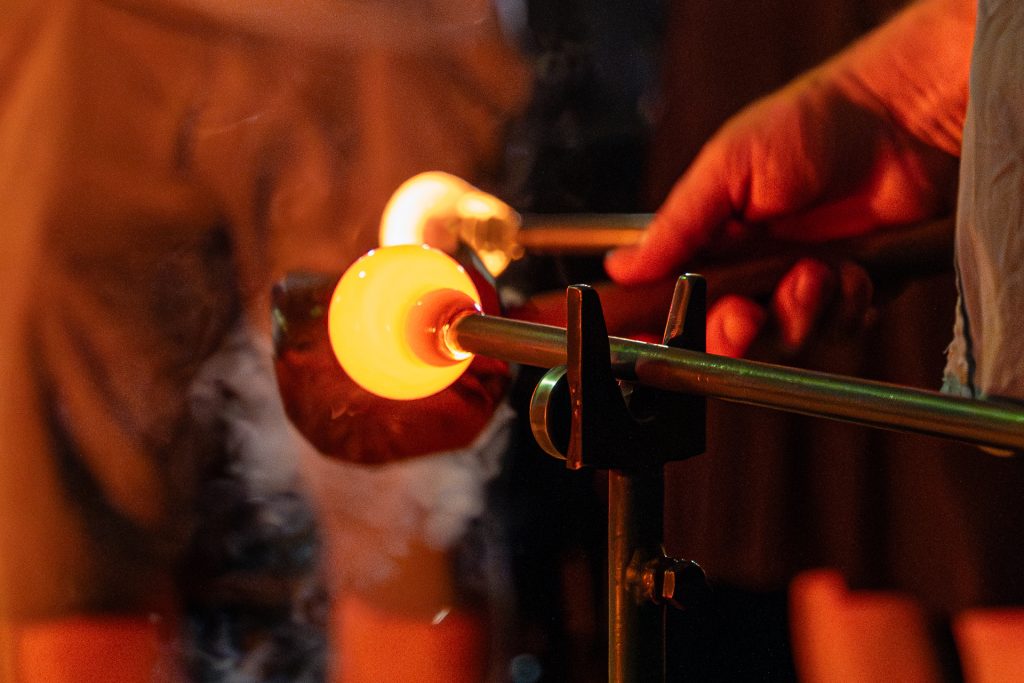
Koldova’s designs often makes unique and graphic shapes that have brought the brand’s glassblowing to whole new level to its predecessors. In one stage of our tour, we watched the creation of one of Koldova’s latest novelties, Spectra, which has an intricate shape that can only be done by one glassblower in the factory. The craftsman makes the piece in one go, blowing the molten glass to size, he then lowers it into a mould located in a pit below floor level of the factory where he continues to blow while a second person helps finalise the shape with compressed air and water. Once the desired shape is achieved, the final piece is put into a kiln to cool very slowly and set. Following the kilning process, items are polished, and quality control checked on a production line before moving to assembly and packaging.
Despite the ease in which the factory workers operate, there are many things that go wrong during the process, which was echoed in the small mountains of shattered glass that were situated outside the factory. However, Rabell showed us that not all is lost when mistakes happen. The team use the broken glass remnants to create furniture pieces such as tabletops, home accessories, or signage. The scraps are melted into sheets of fused, colourful glass that is then cut, washed, and polished into its final shape. This is what is known as Brokisglass.
Following our time on the factory floor, Koldova took over the tour to explain more about the design process. She has been with Brokis since 2013 and is the designer of two of the latest novelties launched this year: the Starcloud and the Spectra. Brokis avoid over saturating the market with seasonal designs and opt for the release of one collection per year with some extensions of best-selling collections, hence the annual celebration of the Glassmakers event. There are many reasons for this including sustainable production, giving each product or product extension the time and attention they need to be appreciated across an international market, and to respect the time that goes into making a Brokis light.
“We need to give space to the collections to make sure that each one gets the right space to penetrate the new markets,” explains Koldova. “Also, the lights must be prepared for all types of market because each is different. For example, the use of different cables and electrical certifications, and so forth can be hard to decipher. So, developing one collection takes a lot time and testing to get it to the right standard for all the markets, which costs a lot of money and effort. Therefore, perfecting one collection per year allows us to be ready for anything.”
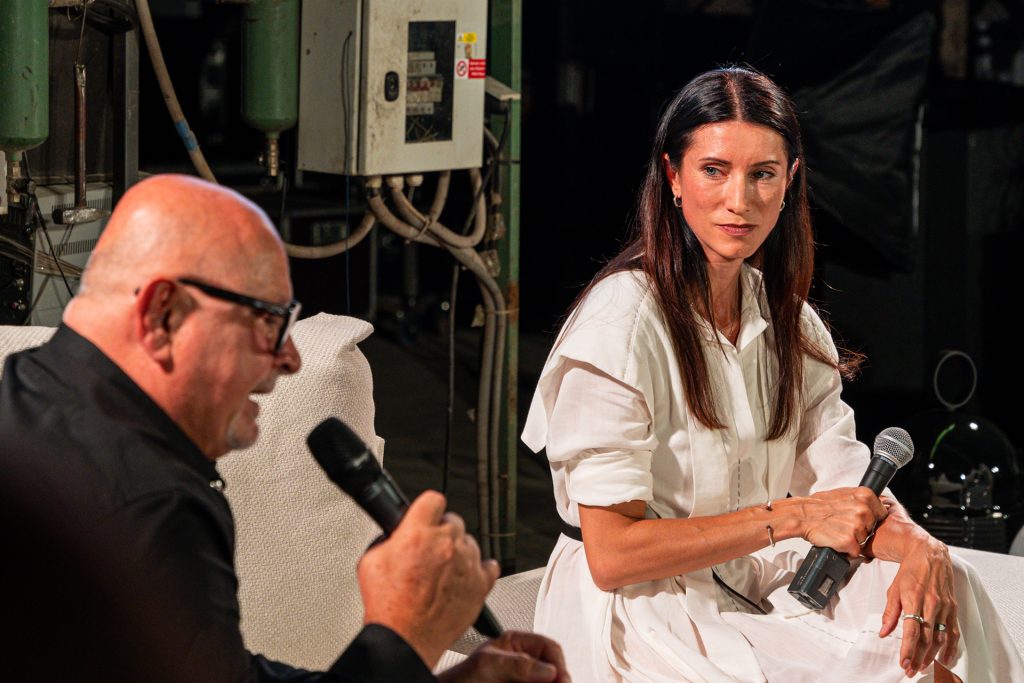
The tour then moved to a small press conference where Italian interior stylist Simona Sbordone and photographer Max Zambelli joined the group to discuss the recently launched Brokis Storyline catalogue. Featuring more than 120 lights from across the Brokis portfolio set in four extraordinary locations, the project marks the beginning of a new chapter in the presentation of the Brokis brand. The catalogue tells the story of a selection of magnificent homes and how the lights change and take on different identities depending on the time of day, all presented in a beautiful large-format printed publication.
In the evening, we returned to the factory for a glamorous night of cocktails, DJ set with a live saxophonist plus, the glassblowers performing their magic skills with opportunities to have dabble with glassblowing ourselves.
Later in the evening, all guests moved into the old factory house, which had been transformed into a showroom displaying new collections from Dome by LCM Marin design studio and Convex by designer Boris Klimek, and novelties from Lucie Koldova taking centre stage. During the unveiling, Koldova spoke about the detail and inspiration of each design. Speaking on her pendant collection ‘Starcloud’, she says: “From the offset, my aim was to design a collection that would let the user create grand constellations. There are three distinct shapes, which I named after three well-known stars: Atria, Lyra, and Vega. The rotational shapes gain in strength and then diminish again, waxing and waning like real stars and completing one another, yet at the same time they exist on their own. They form a shining cloud in the sky, with gentle gradient colours and fluid lines softening the intensity of these cosmically inspired objects.”
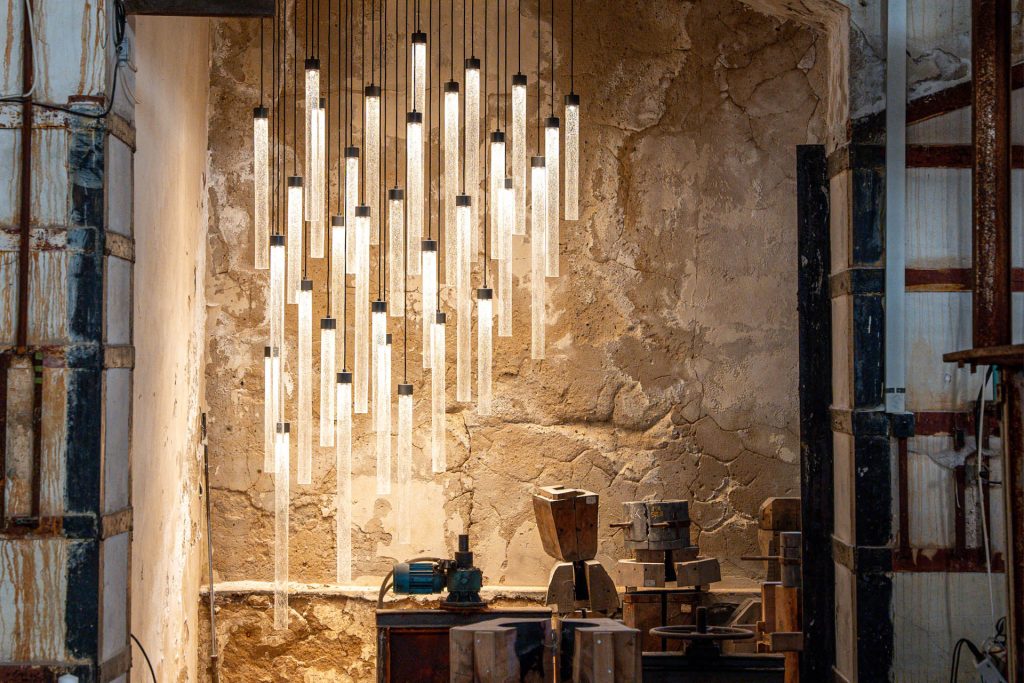
Her second piece, Spectra, (which we saw being made during the tour) is the result of her search to reinvent the archetypal lamp shape but keeping the classic silhouette of a lamp shade and base yet made from one pure piece of glass. Koldova explains: “I wanted to create an elementary, simple line, an external mantle that would serve as the base and the shade in one. The inverted outline of the mantle gives way to an opening in the centre, where I then positioned a two-way light source, the intensity of which can be easily adjusted. The shape of the mantle evokes a sense of levity and loftiness. A specialised method of glassblowing is required to create the mantle as a single piece. The overall appearance of the light emphasises the idea that beauty lies in simplicity.”
After the designers presented their pieces, there was a final unveiling from Rabell and Sbordone, her first collaboration with the brand, a concept piece titled ‘Comet’. The installation displayed an arrangement of approximately 30 tube-like pendants characterised by a distinctive textured glass suspended from different heights, which was created through a special technology of adding silica sand to the molten glass as the glass tubes are hand blown. Comet is another bold statement to the Brokis collection. In addition to the concept chandelier, Sbordine has created a range of home accessories using Brokisglass that were displayed beautifully on pedestals. This set the stage for Rabell’s final announcement of welcoming Sbordine as the new Creative Director of Brokisglass.
As the night drew to a close, we were gifted with a Brokisglass handblown espresso set, all made from the recycled shards of glass. On reflection, the Glassmaker’s Night is about more than celebrating the products and the designers but also a celebration of the glassmakers themselves. Rabell’s aim to revitalise the Czech glassblowing industry has also brought life into the community with many of the locals working for Brokis, acquiring a unique talent that few and far between can do around the world.



